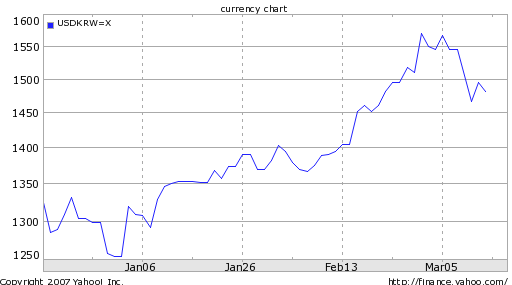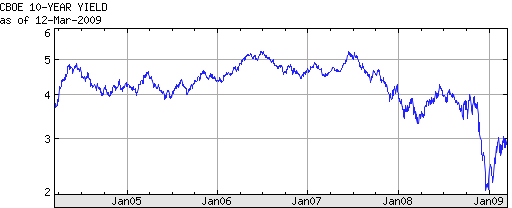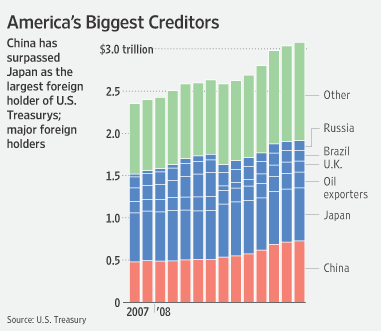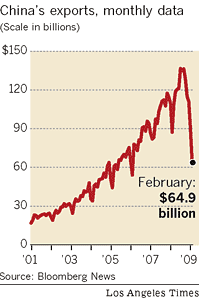The Korean Won is among the biggest losers of the credit crisis, excluding Iceland of course. The currency has fallen 40% against the Dollar over the last year, even adjusting for a 10% rise in the last week. South Korean Finance Minister Yoon Jeung-hyun blames currency speculators, pledging that “The government will not sit idle when the foreign exchange rate is excessively tilted toward one direction or when there are speculative forces.”
Perhaps understanding that it cannot possibly hope to defend its currency against such a broad tide of determined speculators, the Central Bank of Korea has all but given up on intervening in forex markets. “South Korea was the catalyst for the shift away from defensive intervention. After spending 22 percent of foreign reserves from August to November to stem won losses, Yoon…said Feb. 25 that its weakness may be an ‘engine for export growth.’ ”
There is some plausibility to this argument, since South Korean economic fundamentals (as bleak as they are) probably don’t support such a precipitous decline in the Won. In fact some South Korean exporters have benefited from the weak currency, with companies such as Hyundai and Samsung growing revenues and increasing market share. Still, the global recession has impelled foreign consumers to cut back on spending, with the end result that “A double-digit fall in exports in the last three months of 2008 seriously undermined industrial production, [and] a 16% plunge in facility investment was an equally important factor in the 5.6% contraction in Korea’s GDP from the previous quarter.”
Ultimately, the Won’s decline is being driven by an acute shortage of Dollars. A relatively large portion of Korean public and private debt is denominated in foreign currency. The collapse in liquidity spurred by the credit crisis and consequent decline in bank lending have made it very difficult for South Korean borrowers to procure the requisite Dollars to repay their loans, causing a large imbalance in the supply and demand for the Dollar within Korea. Even more alarming is that $150 Billion of such debt will come due in the immediate future. “The government stresses that foreign debt maturing within a year amounts to 77% of its foreign exchange holdings, meaning Korea can cover its obligations. However, no other Asian nation that investors care about has such a high ratio of short-term external debt (on a remaining maturity basis) to foreign exchange reserves.”
South Korea recently extended a swap agreement with the US, which enables it to exchange up to $30 Billion in Won for Dollars. Investors are evidently hopeful that this represents a step towards easing the Dollar shortage, as the news caused the Won to appreciate by the largest margin in months. Borrowing costs for Korean firms remain high, and the odds remain tilted against them. Unless the US financial system stabilizes and/or Korea is able to run a current account surplus (as a result of increased foreign investment), liquidity will remain a problem.


